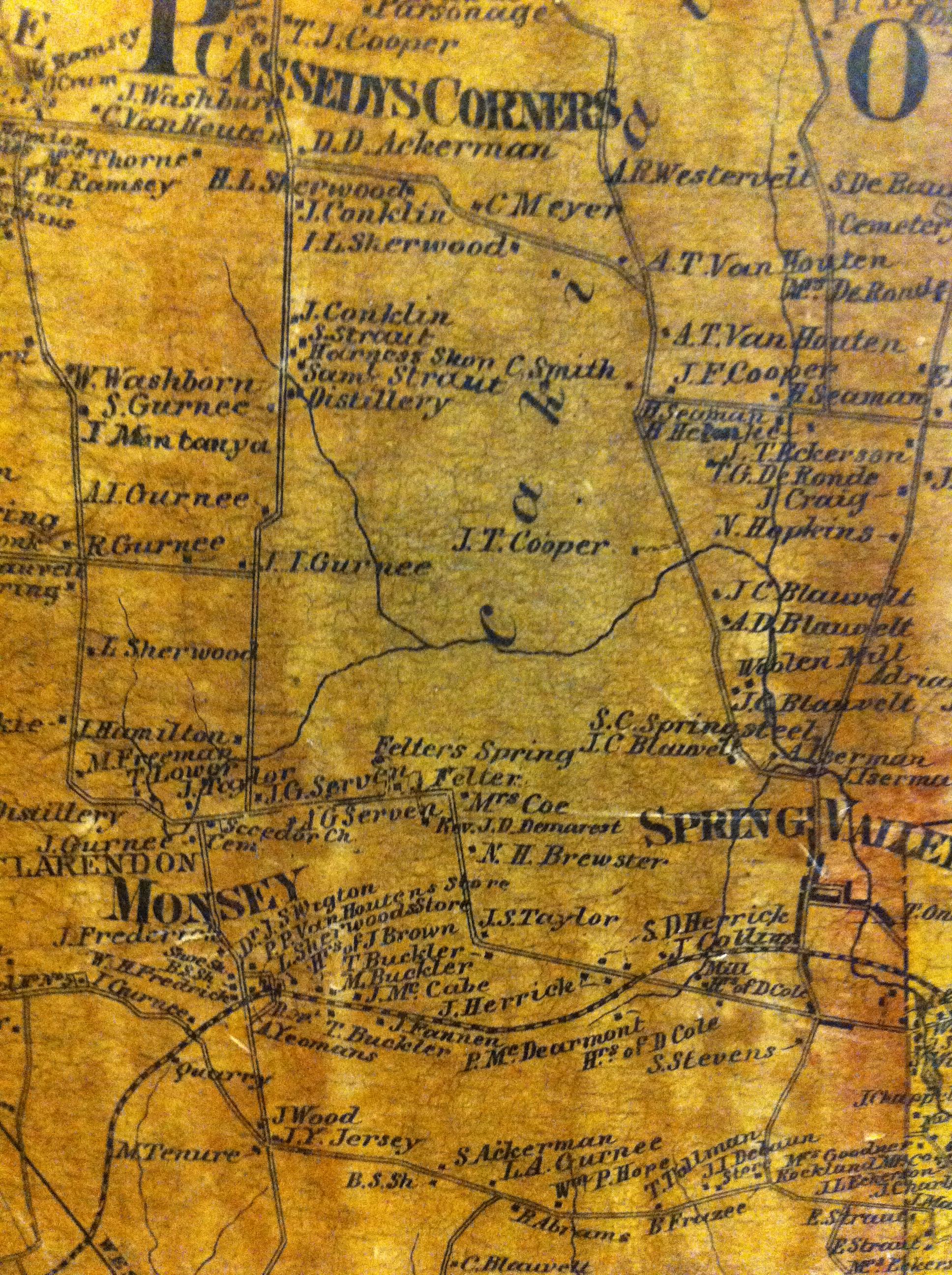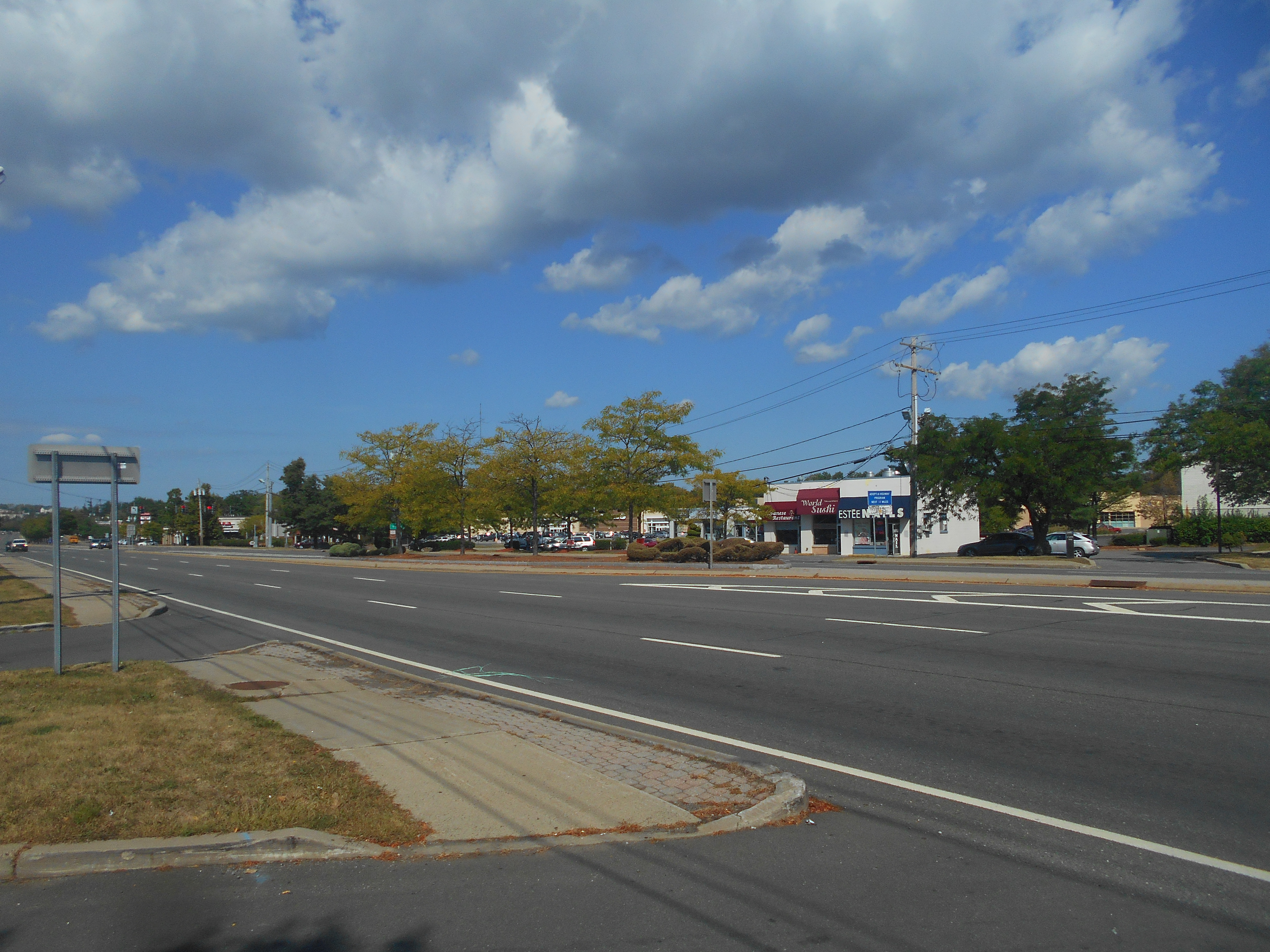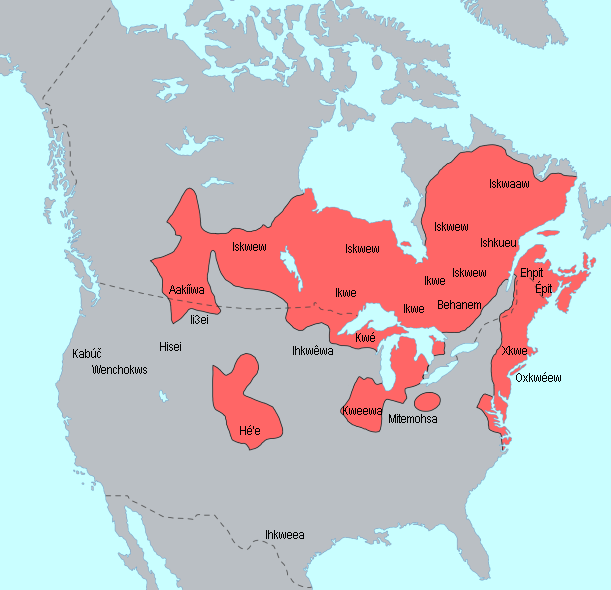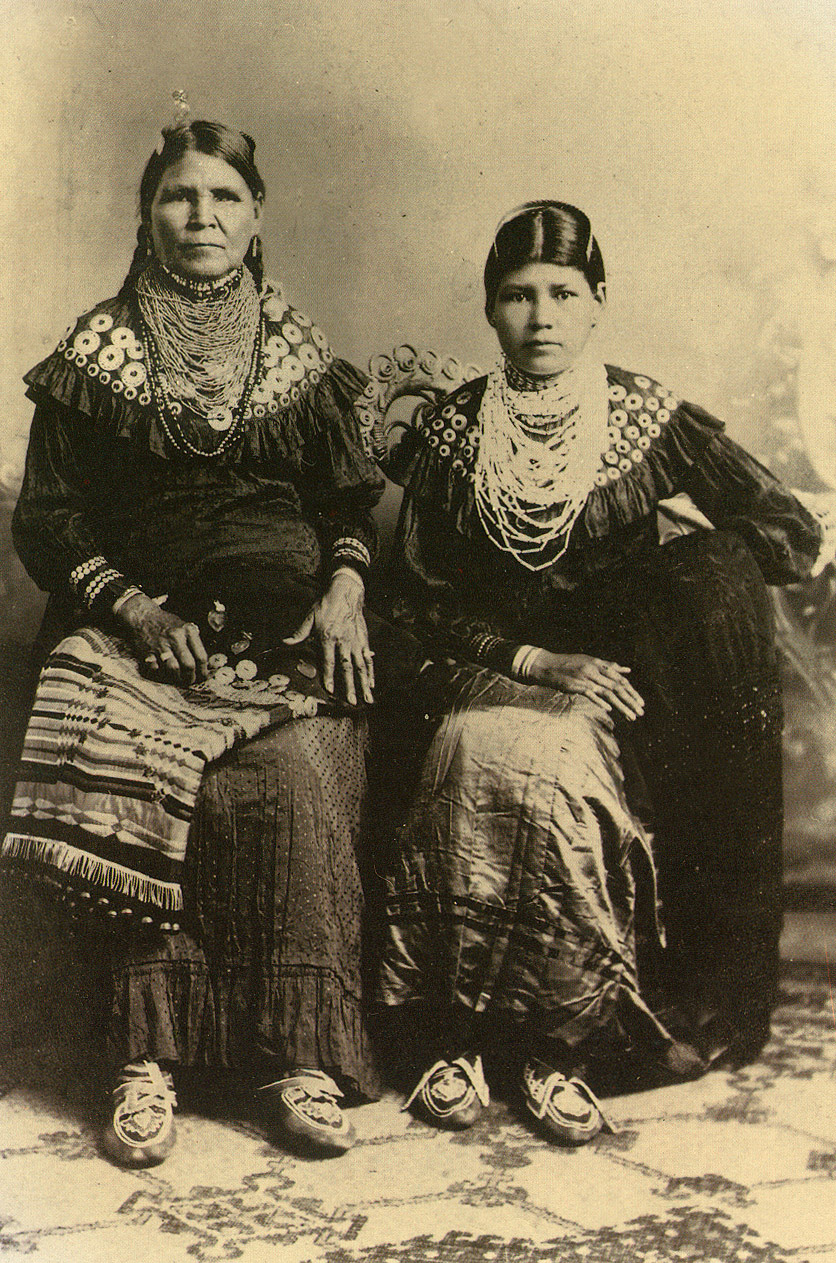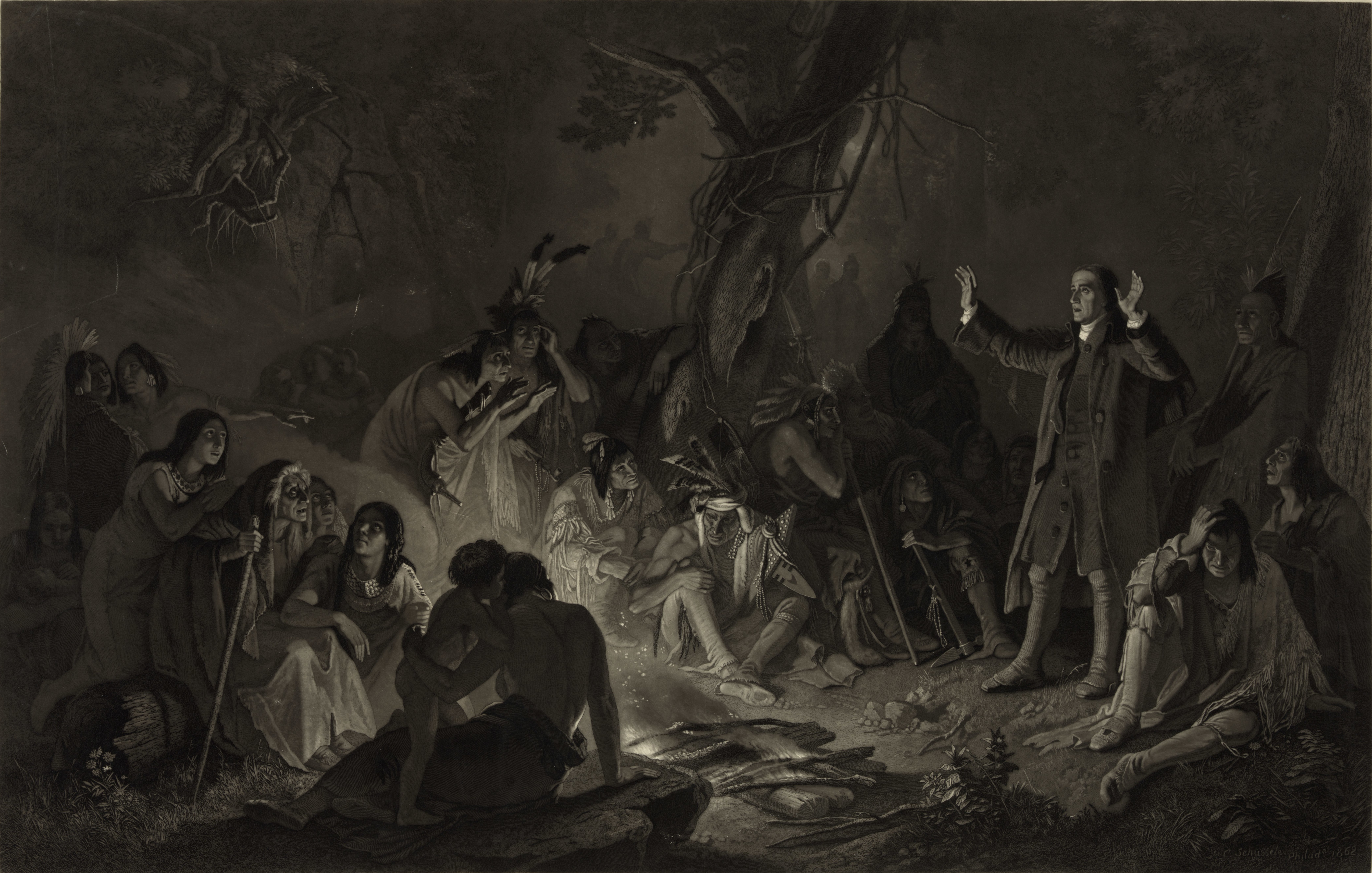|
Monsey, New York
Monsey (, ) is a hamlet and census-designated place in the town of Ramapo, Rockland County, New York, United States, north of Airmont, east of Viola, south of New Hempstead, and west of Spring Valley. The village of Kaser is surrounded by the hamlet of Monsey. The 2020 census listed the population at 26,954. The hamlet has a large, and growing, community of Haredi Jews. History Rockland County was inhabited by the Munsee band of Lenape Native Americans, who were speakers of the Algonquian languages. Monsey Glen, a Native American encampment, is west of the intersection of State Route 59 and State Route 306. Numerous artifacts have been found there and some rock shelters are still visible. The Monsey railroad station, named from an alternate spelling of the Munsee Lenape, was built when the New York & Erie Railroad passed through the glen in 1841. In 1943, Rabbi Shraga Feivel Mendlowitz purchased a property in Monsey with the intention to raise the education level of ... [...More Info...] [...Related Items...] OR: [Wikipedia] [Google] [Baidu] |
Census-designated Place
A census-designated place (CDP) is a Place (United States Census Bureau), concentration of population defined by the United States Census Bureau for statistical purposes only. CDPs have been used in each decennial census since 1980 as the counterparts of incorporated places, such as self-governing city (United States), cities, town (United States), towns, and village (United States), villages, for the purposes of gathering and correlating statistical data. CDPs are populated areas that generally include one officially designated but currently unincorporated area, unincorporated community, for which the CDP is named, plus surrounding inhabited countryside of varying dimensions and, occasionally, other, smaller unincorporated communities as well. CDPs include small rural communities, Edge city, edge cities, colonia (United States), colonias located along the Mexico–United States border, and unincorporated resort and retirement community, retirement communities and their environs. ... [...More Info...] [...Related Items...] OR: [Wikipedia] [Google] [Baidu] |
Viola, New York
Viola is a hamlet and census-designated place in the town of Ramapo, Rockland County, New York, United States. It is located north of Airmont, east of Montebello, south of Wesley Hills, and west of Hillcrest. The population was 6,868 at the 2010 census. History Alms House The Alms House (or County Poor House) was established in 1837, at Viola (then known as Mechanicsville) in the town of Ramapo, for the poor and destitute (debtors). It was located west of New City. Rockland County had purchased the parsonage farm of the Kakiat (West New Hempstead) Dutch Reformed Church (also known as the Brick Church) for use as an alms house. There the county originally built a wooden frame house to serve the poor. The inmates contributed to their upkeep by tending the farm. In 1883, a brick building was constructed. The facility included a school for the children. In 1957, the Alms House was moved to Building "C" at the Pomona Health Center in Summit Park, and the property would ... [...More Info...] [...Related Items...] OR: [Wikipedia] [Google] [Baidu] |
Shraga Feivel Mendlowitz
Shraga Feivel Mendlowitz (1886 – 7 September 1948) was a leader of American Orthodox Judaism and founder of institutions including Torah U'Mesorah, an outreach and educational organization. In 1921 he became principal of Yeshiva Torah Vodaath, an early Brooklyn-based yeshiva founded in 1918. He subsequently added a high school and postgraduate program to the yeshiva. His policies were often informed by the Orthodox philosophical movement Torah im Derech Eretz. Biography Mendlowitz was born in Világ (today Svetlice, Slovakia), in the Austria-Hungarian Empire, a small town near the border of Poland, to a Hasidic family: Moshe and Bas-Sheva Mendlowitz. Shraga Feivel pronounced his family name ''Mendelovich''. His mother died when he was ten. He was twelve when the family relocated to Mezőlaborc (now ), where he studied "with Reb Aaron, ''dayyan'' of Mezo-Laboretz, who considered him his top pupil." Having received ''semicha'' at age 17, he continued his studies under Rabbi ... [...More Info...] [...Related Items...] OR: [Wikipedia] [Google] [Baidu] |
The New York Times
''The New York Times'' (''NYT'') is an American daily newspaper based in New York City. ''The New York Times'' covers domestic, national, and international news, and publishes opinion pieces, investigative reports, and reviews. As one of the longest-running newspapers in the United States, the ''Times'' serves as one of the country's Newspaper of record, newspapers of record. , ''The New York Times'' had 9.13 million total and 8.83 million online subscribers, both by significant margins the List of newspapers in the United States, highest numbers for any newspaper in the United States; the total also included 296,330 print subscribers, making the ''Times'' the second-largest newspaper by print circulation in the United States, following ''The Wall Street Journal'', also based in New York City. ''The New York Times'' is published by the New York Times Company; since 1896, the company has been chaired by the Ochs-Sulzberger family, whose current chairman and the paper's publ ... [...More Info...] [...Related Items...] OR: [Wikipedia] [Google] [Baidu] |
Erie Railroad
The Erie Railroad was a railroad that operated in the Northeastern United States, originally connecting Pavonia Terminal in Jersey City, New Jersey, with Lake Erie at Dunkirk, New York. The railroad expanded west to Chicago following its 1865 merger with the former Atlantic and Great Western Railroad, also known as the New York, Pennsylvania and Ohio Railroad (NYPANO RR). The mainline route of the Erie Railroad proved influential in the development and economic growth of the Southern Tier of New York state, including the cities of Binghamton, Elmira, and Hornell. The Erie Railroad repair shops were located in Hornell and was Hornell's largest employer. Hornell was also where Erie's mainline split into two routes with one proceeding northwest to Buffalo and the other west to Chicago. On October 17, 1960, Erie Railroad merged with its former rival, Delaware, Lackawanna and Western Railroad, to form the Erie Lackawanna Railway. The Hornell repair shops were closed in 197 ... [...More Info...] [...Related Items...] OR: [Wikipedia] [Google] [Baidu] |
New York State Route 306
New York State Route 306 (NY 306) is a north–south state highway in western Rockland County, New York, in the United States. NY 306 runs from NY 59 in the hamlet of Monsey to U.S. Route 202 (US 202) in Ladentown, on the western boundary of the village of Pomona. The road is currently long; however, it originally extended south to the New Jersey state line and north to Willow Grove Road (former NY 210) when it was assigned as part of the 1930 renumbering of state highways in New York. Route description NY 306 begins at NY 59 in the Ramapo hamlet of Monsey and proceeds north as Main Street through part of the business district of Monsey. After passing Maple Avenue in the Jewish village of Kaser, NY 306 becomes Monsey–Ladentown Road for the rest of its run. NY 306 quickly leaves the small village and reenters the town of Ramapo. Roughly north of Kaser, NY 306 intersects County Route 74 (CR 7 ... [...More Info...] [...Related Items...] OR: [Wikipedia] [Google] [Baidu] |
New York State Route 59
New York State Route 59 (NY 59) is an east–west state highway in southern Rockland County, New York, in the United States. The route extends for from New York State Route 17, NY 17 in Hillburn, New York, Hillburn to U.S. Route 9W (US 9W) in Nyack, New York, Nyack. In Suffern, New York, Suffern, it has a concurrency (road), concurrency with U.S. Route 202 in New York, US 202 for . NY 59 runs parallel to the New York State Thruway its entire route. The routing of NY 59 became a state highway in 1911 and was signed as NY 59 in the late 1920s. When NY 59 was first assigned, it began at NY 17 in Suffern. A western bypass of Suffern was designated as New York State Route 339 ; however, it became part of a realigned NY 17 in the mid-1930s. NY 339 was reassigned to NY 17's former routing between Hillburn and Suffern, but it was replaced again by an extended NY 59. In the 1960s, proposals surfaced for the ... [...More Info...] [...Related Items...] OR: [Wikipedia] [Google] [Baidu] |
Algonquian Languages
The Algonquian languages ( ; also Algonkian) are a family of Indigenous languages of the Americas and most of the languages in the Algic language family are included in the group. The name of the Algonquian language family is distinguished from the orthographically similar Algonquin dialect of the Indigenous Ojibwe language (Chippewa), which is a senior member of the Algonquian language family. The term ''Algonquin'' has been suggested to derive from the Maliseet word (), meaning 'they are our relatives/allies'. Speakers of Algonquian languages stretch from the east coast of North America to the Rocky Mountains. The proto-language from which all of the languages of the family descend, Proto-Algonquian, was spoken around 2,500 to 3,000 years ago. There is no scholarly consensus about where this language was spoken. Family division This subfamily of around 30 languages is divided into three groups according to geography: Plains, Central, and Eastern Algonquian. Of t ... [...More Info...] [...Related Items...] OR: [Wikipedia] [Google] [Baidu] |
Indigenous Peoples Of The Americas
In the Americas, Indigenous peoples comprise the two continents' pre-Columbian inhabitants, as well as the ethnic groups that identify with them in the 15th century, as well as the ethnic groups that identify with the pre-Columbian population of the Americas as such. These populations exhibit significant diversity; some Indigenous peoples were historically hunter-gatherers, while others practiced agriculture and aquaculture. Various Indigenous societies developed complex social structures, including pre-contact monumental architecture, organized city, cities, city-states, chiefdoms, state (polity), states, monarchy, kingdoms, republics, confederation, confederacies, and empires. These societies possessed varying levels of knowledge in fields such as Pre-Columbian engineering in the Americas, engineering, Pre-Columbian architecture, architecture, mathematics, astronomy, History of writing, writing, physics, medicine, Pre-Columbian agriculture, agriculture, irrigation, geology, minin ... [...More Info...] [...Related Items...] OR: [Wikipedia] [Google] [Baidu] |
Lenape
The Lenape (, , ; ), also called the Lenni Lenape and Delaware people, are an Indigenous peoples of the Northeastern Woodlands, Indigenous people of the Northeastern Woodlands, who live in the United States and Canada. The Lenape's historical territory included present-day northeastern Delaware, all of New Jersey, the eastern Pennsylvania regions of the Lehigh Valley and Northeastern Pennsylvania, and New York Bay, western Long Island, and the lower Hudson Valley in New York (state), New York state. Today communities are based in Oklahoma, Wisconsin, and Ontario. During the last decades of the 18th century, European settlers and the effects of the American Revolutionary War displaced most Lenape from their homelands and pushed them north and west. In the 1860s, under the Indian removal policy, the Federal government of the United States, U.S. federal government relocated most Lenape remaining in the Eastern United States to the Indian Territory and surrounding regions. The la ... [...More Info...] [...Related Items...] OR: [Wikipedia] [Google] [Baidu] |
Christian Munsee
The Christian Munsee are a group of Lenape (also known as ''Delaware''), an Indigenous people in the United States, that primarily speak Munsee and have converted to Christianity, following the teachings of Moravian missionaries. The Christian Munsee are also known as the Moravian Munsee or the Moravian Indians, the Moravian Christian Indians or, in context, simply the Christian Indians. As the Moravian Church transferred some of their missions to other Christian denominations, such as the Methodists, Christian Munsee today belong to the Moravian Church, Methodist Church, United Church of Canada, among other Christian denominations. The Christian Munsee tribe has produced several people who have become notable figures in Christianity and the Delaware Nation as a whole, such as Gelelemend (a Lenape chief), John Henry Kilbuck (a Moravian Christian missionary to the Native peoples in Alaska), Papunhank (a Moravian Lenape diplomat and preacher), Glikhikan (Munsee chief, Moravian ... [...More Info...] [...Related Items...] OR: [Wikipedia] [Google] [Baidu] |
Haredi Judaism
Haredi Judaism (, ) is a branch of Orthodox Judaism that is characterized by its strict interpretation of religious sources and its accepted (Jewish law) and traditions, in opposition to more accommodating values and practices. Its members are often referred to as "ultra-Orthodox" in English, a term considered pejorative by many of its adherents, who prefer the terms strictly Orthodox or Haredi (plural: Haredim). Haredim regard themselves as the most authentic custodians of Jewish religious law and tradition which, in their opinion, is binding and unchangeable. They consider all other Movements of Judaism, expressions of Judaism, including Modern Orthodox Judaism, Modern Orthodoxy, as "deviations from God's laws", although other movements of Judaism would disagree. Some scholars have suggested that Haredi Judaism is a reaction to societal changes, including Jewish emancipation, political emancipation, the movement derived from the Age of Enlightenment, Enlightenment, Jewish as ... [...More Info...] [...Related Items...] OR: [Wikipedia] [Google] [Baidu] |
